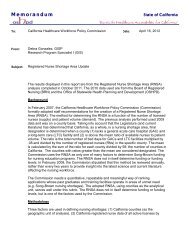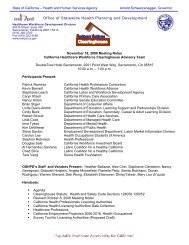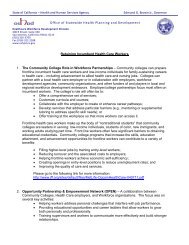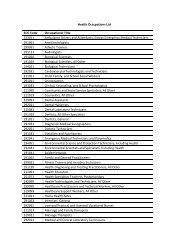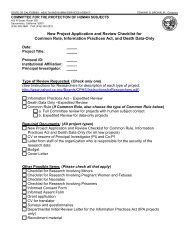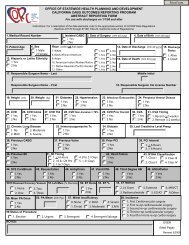Best Practices for Project Management, Design, and Construction of ...
Best Practices for Project Management, Design, and Construction of ...
Best Practices for Project Management, Design, and Construction of ...
You also want an ePaper? Increase the reach of your titles
YUMPU automatically turns print PDFs into web optimized ePapers that Google loves.
• Examine requests <strong>for</strong> changes by owner stakeholders carefully. Changes create project<br />
delay <strong>and</strong> increase costs. Evaluate whether any change is really needed or simply reflects<br />
a preference. Often new staff or new technology can stimulate the "need" <strong>for</strong> change by<br />
owners, but these should not be sufficient motivation. Determine whether the changes can<br />
be made later, after the project is complete. Often the cost <strong>of</strong> making changes during<br />
construction will be significantly greater than if the changes are made as a separate<br />
follow-on project.<br />
• Consider administrative support <strong>for</strong> the IOR program. The IOR, the primary interface with<br />
OSHPD FDD <strong>and</strong> the project, conducts inspections, assists the design team with ACDs,<br />
acts as the on-site representative <strong>for</strong> OSHPD FDD, <strong>and</strong> keeps the owner in<strong>for</strong>med about<br />
progress <strong>and</strong> problems. Consequently, allocating IOR resources is one <strong>of</strong> the critical<br />
elements <strong>of</strong> success <strong>for</strong> any project. Hire competent IORs <strong>and</strong> ensure a sufficient number<br />
to serve the project. Any weakness in the IOR program will lead to project delays,<br />
contractor claims, <strong>and</strong> general chaos. The IOR is the primary interface with OSHPD FDD<br />
<strong>and</strong> the project.<br />
• Include the IOR inspection program as part <strong>of</strong> the contract. Inspections by the IOR are<br />
required by the regulations <strong>and</strong> must be per<strong>for</strong>med. This process will increase the cost to<br />
the contractor <strong>and</strong> should be included in the contract. Establishing the inspection program<br />
early <strong>and</strong> managing it daily will facilitate coordination with OSHPD <strong>and</strong> optimize the time<br />
spent on the project by OSHPD FDD field staff.<br />
• Schedule OSHPD FDD field staff time efficiently. OSHPD FDD’s available time at the<br />
project site is limited. The owner, through the IORs, should ensure that priorities are<br />
established <strong>and</strong> that all parties are ready when COs, DSEs, or FLSOs are on site so that<br />
their time is efficiently utilized.<br />
• Follow OSHPD FDD’s process <strong>for</strong> resolution <strong>of</strong> problems should they arise. These<br />
processes are detailed on OSHPD’s Website. The first step on any issue is to meet with<br />
the Compliance Officer <strong>and</strong> explain the issue. Many times the owner does not have all the<br />
pertinent details <strong>and</strong> a discussion with the Compliance Officer could save the owner time<br />
<strong>and</strong> possible embarrassment.<br />
Other owner-related issues are discussed in detail in Section 7 <strong>of</strong> this volume.<br />
Summary<br />
The major problems associated with construction project delays are the following:<br />
• Work not executed in con<strong>for</strong>mance with the approved construction documents,<br />
• Post approval changes, <strong>and</strong><br />
• Delays in processing deferred submittals <strong>and</strong> ACD documents.<br />
(OSHPD <strong>Best</strong> <strong>Practices</strong>) Page 84 DRAFT FINAL, Sept. 2011



